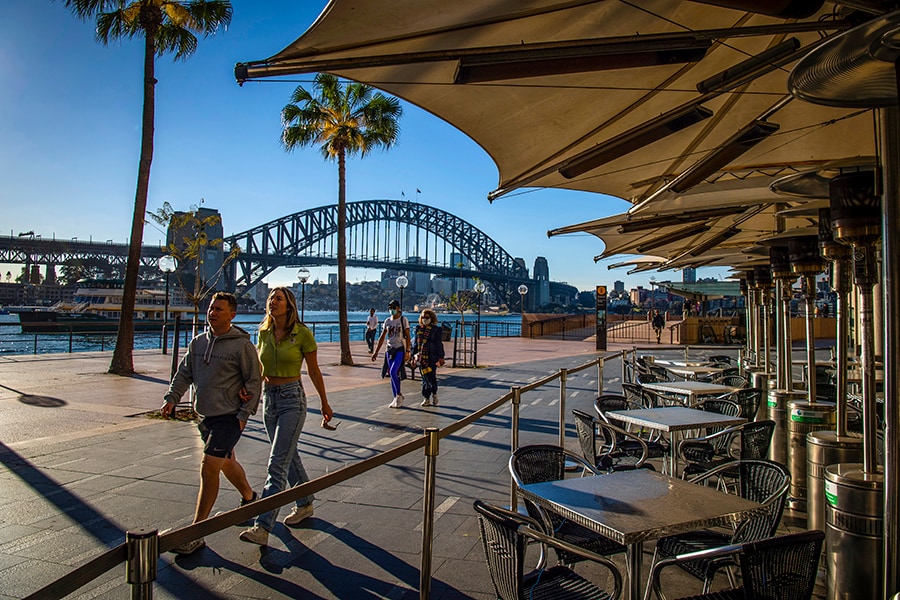
Has Covid-19 cost Australia its love for freedom?
The confidence and pride of 2020, when lockdowns and isolation brought Covid-19 outbreaks to heel, have been replaced by doubt, fatigue and a bitter battle over how much freedom or risk should be allowed in a delta-defined future
 Residents pass an empty cafe near the Opera House in Sydney, Australia, on Aug. 13, 2021. Half the country is locked down, and its borders remain closed, but most Australians are willing to make these sacrifices in pursuit of a collective freedom from fear of the virus.
Residents pass an empty cafe near the Opera House in Sydney, Australia, on Aug. 13, 2021. Half the country is locked down, and its borders remain closed, but most Australians are willing to make these sacrifices in pursuit of a collective freedom from fear of the virus.
Image: Matthew Abbott/The New York Times
SYDNEY — In the war against the coronavirus’s delta variant, few if any democracies have demanded as much of their people as Australia.
In the middle of the latest lockdowns, the police in Sydney gave hefty fines to three moms with strollers chatting in a park. Melbourne’s playgrounds were wrapped in police tape, and traveling between a state with COVID to one without — for the lucky few granted permission by the authorities — requires two-week stints in quarantine at a hotel or a remote former mining camp.
There are now two Australias. In Perth, offices, pubs and stadiums are crammed and normal as ever — the payoff for a closed-border approach that has made Western Australia an island within an island. In Sydney, residents are approaching their 14th week of lockdown. The working-class areas with the highest infection rates have faced a heavy police presence, and, until recently, a 9 p.m. curfew and just an hour of outdoor exercise per day.
Is the sacrifice worth it?
Australia is at a crossroads with COVID. The confidence and pride of 2020, when lockdowns and isolation brought COVID outbreaks to heel, have been replaced by doubt, fatigue and a bitter battle over how much freedom or risk should be allowed in a delta-defined future.
©2019 New York Times News Service




